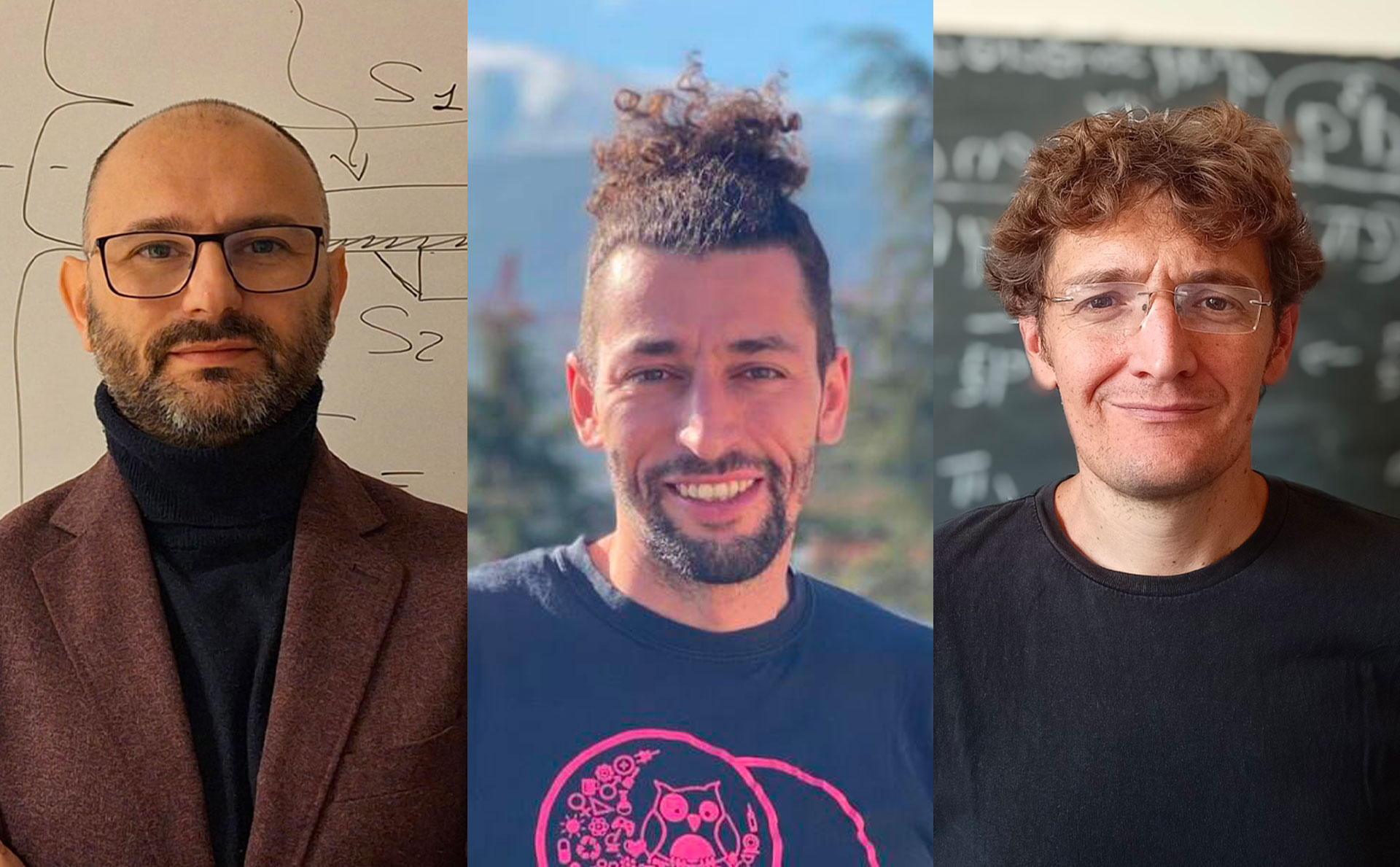Three frontier research projects are set to enter the operational phase thanks to a total funding of over 5 million euros from the Italian Ministry of Universities and Research (MUR). They are QuLEAP, SURFACE and ET-NOW and aim to revolutionise fundamental physics through the development of innovative quantum detectors, tools for building increasingly sensitive experiments for studying rare events, and an international hub dedicated to the science of the future of Einstein Telescope, Europe’s large observatory for gravitational waves.
The three-year projects were proposed by three INFN-associated researchers and selected as part of the second call for proposals of the Italian Science Fund (FIS 2), which, with a budget of over 330 million euros, rewards the most original and innovative ideas on the scientific scene. They will be coordinated by Federico Paolucci, researcher at the University of Pisa, Giovanni Benato, researcher at the Gran Sasso Science Institute (GSSI), and Paolo Pani, professor at the Sapienza University of Rome.
QuLEAP (Next Generation Quantum Detectors for Low Energy Astroparticle Physics), conceived by Federico Paolucci, aims to develop new particle detectors based on quantum technologies. The aim is to improve the ability to observe extremely weak signals, such as those produced by gravitational waves or dark matter, overcoming the limits of current technologies. The project will exploit superconducting materials and innovative techniques to achieve unprecedented sensitivity. Funded with 1.5 million euros, QuLEAP is part of the SIF consolidator grants for researchers with an established career and a promising track record.
Federico Paolucci is a researcher at the University of Pisa and an associate at INFN. He obtained his PhD in physics at the University of Stuttgart and a second PhD in Advanced Materials at the Max Planck Institute for Solid State Research working on graphene. Over the years, Federico has worked at the Politecnico di Torino, the CNR Nanoscience Institute, the Scuola Normale Superiore and INFN, studying electronic and thermal transport in mesoscopic systems based on semiconductors, metals and superconductors. Currently, the focus of his research is on developing innovative schemes for electronics and radiation detection using superconducting systems.
The aim of SURFACE (Silicon Underground Radiopure Finder of Alpha Contamination Excesses), proposed by Giovanni Benato, is to develop a new instrument to measure radioactive contamination in materials used for rare event physics experiments. This technology will be used at INFN Gran Sasso National Laboratories (LNGS), supporting next-generation experiments aimed at revealing dark matter or processes that have never yet been observed, such as neutrinoless double beta decay. The project received 1.6 million euros in funding as part of the FIS 2 consolidator grants.
Giovanni Benato is a researcher at the Gran Sasso Science Institute and an INFN associate. He holds a PhD in physics from the University of Zurich and has worked at the University of California at Berkeley, INFN Gran Sasso National Laboratories (LNGS) and the CEA Institute for Research on the Fundamental Laws of the Universe (IRFU) in Saclay, France. He is currently involved in three experiments at the LNGS: CUORE and CUPID, which seek to observe a very rare physical process, double beta decay without neutrino emission, and ResNova, which aims to study supernovae by detecting the neutrinos they emit.
The project presented by Paolo Pani is ET-NOW (Fundamental Physics, Nuclear Physics and Cosmology with the Einstein Telescope) and its overall objective is to develop an advanced theoretical platform to work on the scientific objectives of ET, the future European gravitational wave detector that Italy is a candidate to host at Sos Enattos, in Sardinia, and which will start acquiring data after 2035. ET-NOW aims to create theoretical models and numerical techniques capable of analysing physical phenomena that are currently inaccessible to existing detectors, but which will become explorable with ET. Funding for the project amounts to 2 million euros and is part of the advanced grants of the FIS, which are aimed at established researchers.
Paolo Pani is a professor of theoretical physics at Sapienza University of Rome, where he coordinates the theoretical gravity group, and a INFN researcher. He is co-author of the books “General relativity and its applications” and “Superradiance: new frontiers in black-hole physics”, as well as numerous scientific publications on the theory of gravitation, black holes, neutron stars, gravitational waves and their implications for fundamental physics.






